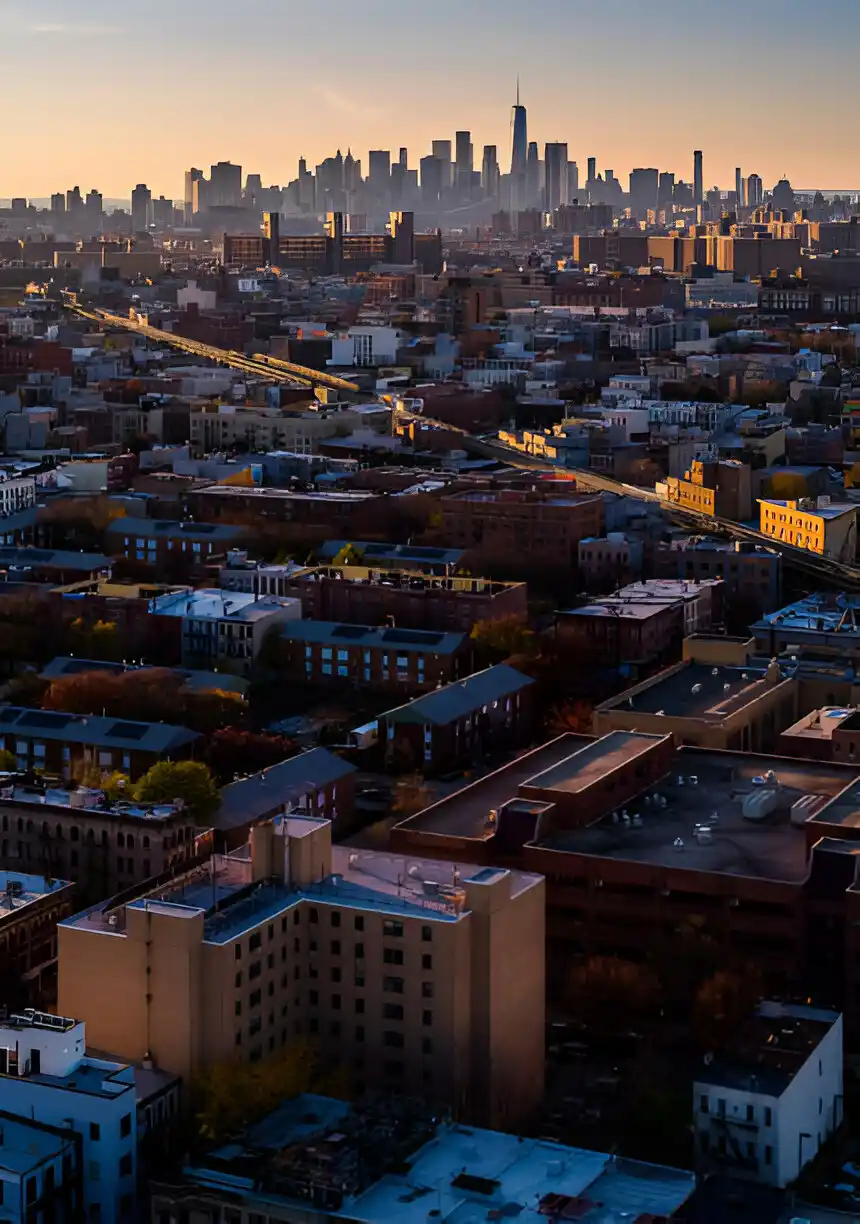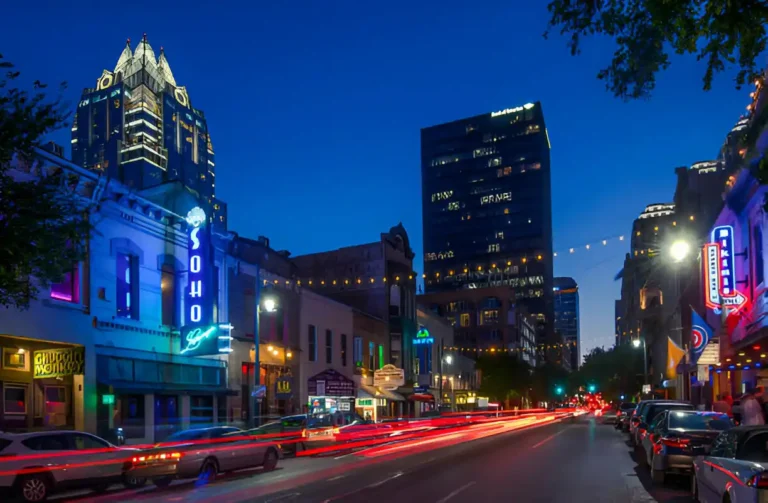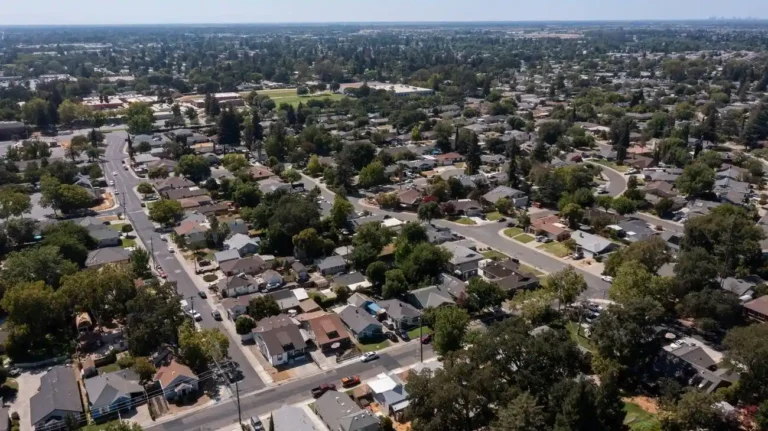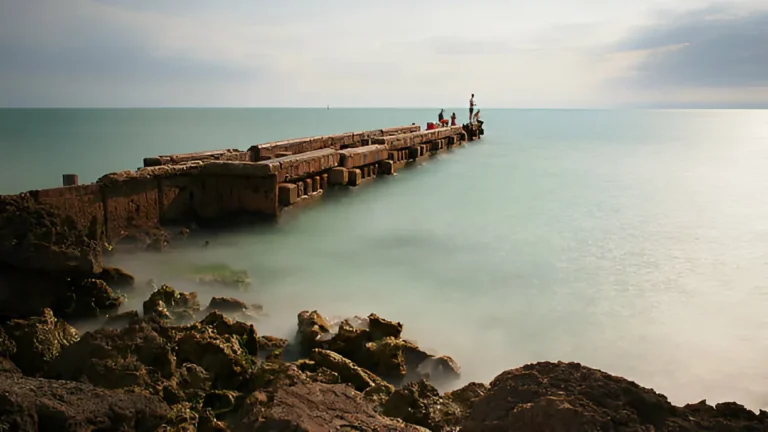Is Bushwick Safe: Is Bushwick Really as Dangerous as They Say
Bushwick has undergone a remarkable transformation over the past couple of decades. Once known as a high-crime area plagued by poverty, drugs, and gang violence, this northern Brooklyn neighborhood has emerged as one of New York City’s trendiest destinations.
Today’s Bushwick is a vibrant, artistic community that draws young creatives, hipsters, and newcomers seeking an edgier, more affordable alternative to nearby Williamsburg. The neighborhood’s gritty industrial aesthetic and street art scene provide a bohemian vibe, while trendy restaurants, bars, and coffee shops cater to its increasingly diverse population.
Key to Bushwick’s revival has been an influx of artists and galleries lured by cheap rents and expansive loft spaces. Vibrant murals and graffiti art adorn building facades, while underground music venues, poetry readings, and offbeat performances contribute to the area’s countercultural appeal. Despite rising costs, Bushwick still offers relative affordability compared to other rapidly gentrifying Brooklyn enclaves.
With a current population of around 114,882. Bushwick has transformed from a predominantly Hispanic enclave to a melting pot of ethnicities, ages, and backgrounds. Still, the neighborhood maintains strong Hispanic roots and an authentic ethnic flavor reflected in its wealth of Mexican, Dominican, and Puerto Rican eateries and bodegas.
Understanding Bushwick’s Current Crime Rates
The unsettling crime statistics in Bushwick, where rates surpass the national average by 45%. Violent crimes soar by 151%, posing a 1 in 30 risk of victimization. Despite being safer than 38% of NY cities, the overall crime in the state has surged by 35% annually. Bushwick has come a long way from its reputation as a high-crime area in decades past. According to the latest data from the New York Police Department, Bushwick’s overall crime rate has steadily declined in recent years and is now on par with many other Brooklyn neighborhoods. In 2022, Bushwick had 1,842 reported crimes, a decrease of nearly 10% from the previous year. This places Bushwick’s crime rate at around 28 per 1,000 residents, slightly higher than the Brooklyn-wide average of 24 crimes per 1,000 residents but lower than some gentrifying areas like Williamsburg and Crown Heights.
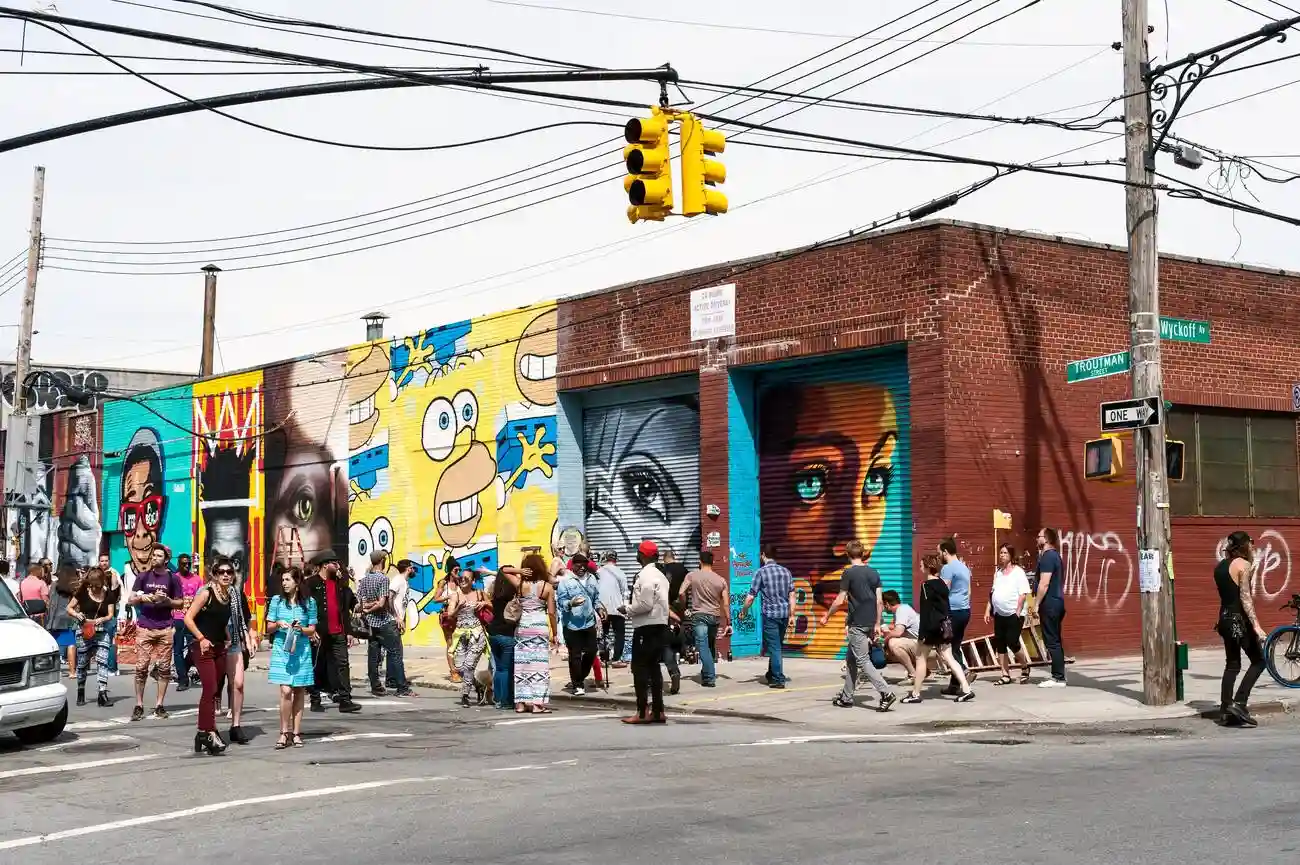
Regarding the types of crimes occurring in Bushwick, the vast majority are property crimes such as burglary, theft, and vandalism. In 2022, property crimes accounted for approximately 75% of all reported incidents in the neighborhood. Violent crimes, including assault, robbery, and domestic violence, made up the remaining 25%. While no neighborhood is completely immune to crime, Bushwick’s current statistics suggest that it has become a relatively safe place to live and visit, especially compared to its troubled past. As with any urban area, it’s still important for residents and visitors to exercise caution and be aware of their surroundings.
Areas of Concern: Mapping Bushwick’s Crime Hotspots
While Bushwick has seen an overall decline in crime rates, some areas remain more problematic than others. The northern industrial zones along Flushing Avenue and around the Broadway Junction transit hub tend to have higher property crime incidents like burglary, theft, and vandalism. Closer to the southern residential areas near Maria Hernandez Park and the trendy Bushwick Collective street art hotspots, violent crimes like assault, robbery, and gang activity occur with slightly more frequency. Muggings and break-ins have been reported even on busier streets like Knickerbocker Ave and Wyckoff Ave at night.
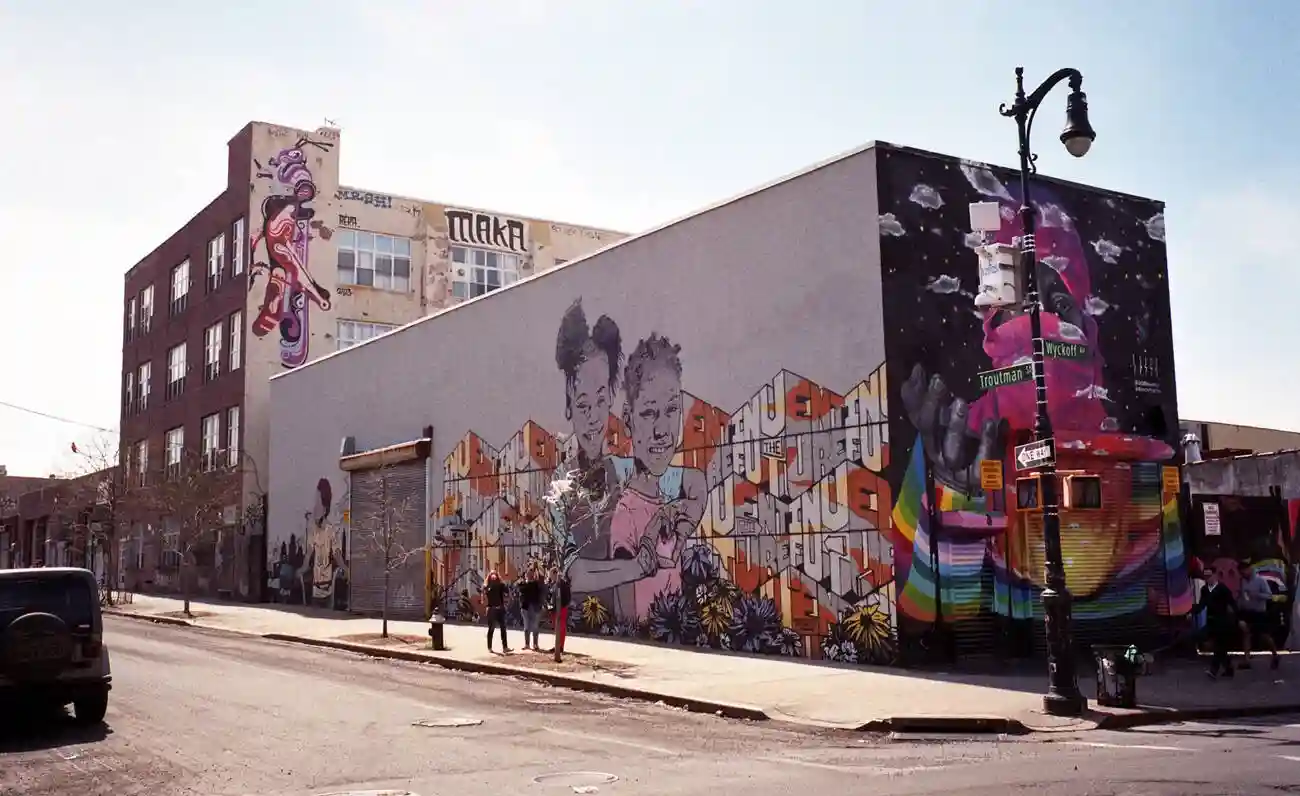
The heart of Bushwick between Myrtle Ave and Flushing Ave is generally regarded as safer, especially west of Knickerbocker Ave where much of the neighborhood’s residential revival has taken place. However, no area is completely immune from criminal activity. Remaining vigilant and taking common sense precautions is advised throughout Bushwick.
Common Crimes and Safety Concerns in Bushwick
While Bushwick’s overall crime rate has dropped significantly in recent years, certain types of crimes are still prevalent in the neighborhood. According to recent data from the New York Police Department, the most commonly reported crimes in Bushwick include:
Robbery:
Muggings and street robberies remain a concern, particularly in isolated areas or late at night. Perpetrators often target individuals carrying valuables like phones, laptops, or jewelry.
Burglary and Theft:
Break-ins and property theft are among the most frequently reported crimes. Apartments, homes, and businesses are all potential targets for burglars looking for cash, electronics, or other valuables.
Assault:
Instances of assault, including domestic violence situations and bar fights, occur with some regularity. Alcohol is often a contributing factor.
Vehicle Theft and Break-ins:
Car theft and vehicle break-ins happen throughout Bushwick, especially in areas with limited parking or poor lighting. Another safety issue that visitors and potential residents should be aware of is the risk of illegal short-term rental scams. With Bushwick’s popularity among tourists, unscrupulous operators sometimes list fake rental properties online to defraud unsuspecting guests. Thoroughly research listings and only book through reputable platforms to avoid being victimized.
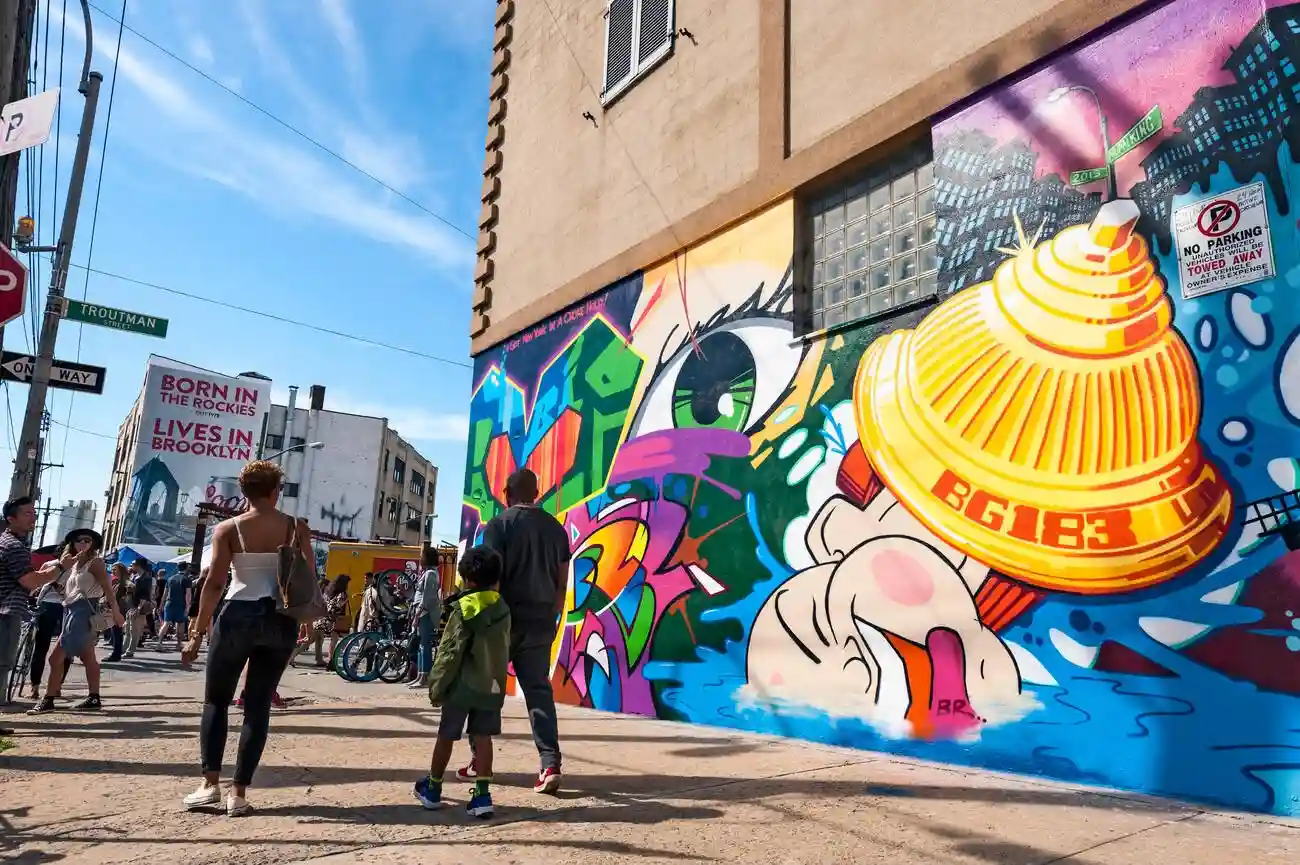
Is Bushwick Still Dangerous? Examining Its Lingering Reputation
While Bushwick’s crime rates have dropped significantly from their peak in the 1980s and 1990s, the neighborhood still carries a lingering reputation as a dangerous area in some circles. This perception is rooted in Bushwick’s troubled past as one of New York City’s highest-crime areas plagued by poverty, gang violence, and the drug epidemic that impacted many inner-city communities.
Longtime residents and those familiar with Bushwick’s transformation argue that this reputation is now largely outdated and no longer accurately reflects the reality on the ground. As one local business owner put it, “The Bushwick of today bears little resemblance to the Bushwick I grew up in. It’s undergone a remarkable transformation that many outsiders don’t fully appreciate.”
Resident sentiments suggest that while Bushwick still has its share of issues like any urban area, the overwhelming majority feel safe going about their daily lives. A local community advocate noted, “Of course, no neighborhood is perfect, and we still have work to do. But the idea that Bushwick is some war zone is simply not accurate anymore.”
Many credit increased police presence, public and private investment in housing and infrastructure, and the influx of new residents and businesses for helping turn the tide. While reasonable precautions are still advised, most agree that Bushwick has become a safe and vibrant community distinctly different from its past struggles.
Safety Tips and Precautions for Visiting Bushwick
While Bushwick has come a long way in shedding its dangerous reputation, visitors should still take some common-sense precautions when exploring this neighborhood. Stick to well-lit main streets like Knickerbocker Avenue, Flushing Avenue, and Myrtle Avenue, especially at night. Avoid wandering too far into residential side streets after dark.
It’s generally wise to avoid flashing expensive jewelry, electronics, or cash, as opportunistic crimes can still occur. Keep valuables secure and remain aware of your surroundings. Use caution when taking photos or videos, as this can make you an easy target for thieves.
Traveling in groups is always safer than going out alone, especially at night. Avoid isolated areas and stick to busier commercial strips. Don’t resist if you are unfortunately the victim of a mugging or robbery – property can be replaced, but your safety is most important. As with any urban area, use licensed car services or public transportation when possible instead of walking long distances alone at night. Be cautious when using subway stations that may be isolated or poorly lit.

While the vast majority of Bushwick residents are friendly, use discretion when engaging with strangers, especially those who seem intoxicated or confrontational. Trust your instincts if a situation feels unsafe. Using basic street smarts and avoiding risky situations will allow you to safely experience the vibrant culture and attractions Bushwick has to offer.
The Appeal of Bushwick: Arts, Culture and Affordability
Beyond just crime statistics, Bushwick’s greatest draw for many is its thriving creative scene and relatively affordable living costs compared to trendier Brooklyn neighborhoods. The area has become a hub for artists, musicians, and other creative types attracted by the lower rent prices and grittier, bohemian vibe.
Bushwick is home to a vibrant street art scene, with vibrant murals adorning many buildings, walls, and surfaces. Guided street art tours are popular for visitors wanting to experience this unique cultural offering. Independent art galleries have proliferated too, featuring cutting-edge works by emerging and established artists alike.
The neighborhood’s arts and culture aren’t just limited to the visual arts. Live music venues, comedy shows, and underground dance parties and raves are part of Bushwick’s rich creative fabric. From gritty dive bars to chic cafes, there are endless options for experiencing the area’s youthful, artistic energy.
Despite its growing popularity, Bushwick still offers more affordable housing costs than many other parts of Brooklyn. The median rent for a one-bedroom apartment is around $2,000 – a relative bargain compared to $3,000+ in Williamsburg or $4,000+ in Manhattan’s trendier nabes. Lower commercial rents have enabled local entrepreneurs to open unique small businesses too. For artists, families, and anyone seeking a creative community at reasonable prices, Bushwick provides that coveted mix of grit, culture, and affordability that’s harder to find elsewhere in New York City.
Also Read:
Bushwick’s Continued Progress: Investments and Improvements
Bushwick is undergoing significant infrastructure improvements and community investment aimed at enhancing safety and livability. The neighborhood has seen an increase in street lighting, making routes safer for pedestrians at night. Additionally, the NYPD has boosted police presence with more foot and vehicle patrols in problem areas.
Residential development is booming in Bushwick, with new apartment buildings, renovated housing stock, and an influx of businesses catering to the growing population. As more residents and businesses take root, there is a vested interest in maintaining a secure environment. Community organizations like the Bushwick Street Renaissance and local block associations actively work to address quality-of-life issues.
Private-public partnerships have funded greening initiatives to transform vacant lots into community gardens and public spaces. The Bushwick Inlet Park development will provide 27 acres of waterfront parkland along Newtown Creek. These efforts not only create vibrant community hubs but also deter crime through environmental design principles.
The combination of physical improvements, increased police presence, residential investment, and community engagement is helping drive Bushwick’s continued transformation into a safer, more livable neighborhood for its diverse residents and visitors.
Getting Around: Bushwick’s Transit Access
Bushwick’s public transportation options make it an appealing location for commuters and those wanting easy access to other parts of Brooklyn and Manhattan. The neighborhood is served by the L and M subway lines, with popular stops like Morgan Avenue, Jefferson Street, and Myrtle-Wyckoff Avenues.
The L train provides a direct route into Manhattan, connecting Bushwick to the East Village, Union Square, and other downtown hotspots. The M train heads through central Brooklyn towards Manhattan as well. Both lines offer convenient transfers to almost every other subway route.
For travel within Brooklyn, several bus routes crisscross Bushwick, including the B13, B20, B38, B54, B60, and Q59. Rideshare services like Uber and Lyft are also widely available.
Bushwick’s location next to the Brooklyn-Queens Expressway (BQE) offers easy access by car to the rest of Brooklyn as well as Queens and Manhattan via the Williamsburg Bridge and other crossings. Cycling is an increasingly popular way to get around the neighborhood’s flat terrain.
Bushwick provides solid transportation options for commuters, residents running errands, and visitors looking to explore different parts of the city. Its transit accessibility is a major factor in its growing appeal.
The Future of Bushwick: Predictions and Outlook
Based on current trends, Bushwick’s trajectory points towards continued gentrification and development in the coming years. As more residents and businesses are drawn to the neighborhood’s vibrant culture, relative affordability, and proximity to Manhattan, real estate values and rental prices will likely continue climbing.
This influx of wealth and resources also brings the potential for improved infrastructure, increased police presence, and further safety enhancements. Streetlights, park renovations, and crackdowns on illicit activities could make Bushwick feel even more secure for residents and visitors alike.
Yet amid these changes, Bushwick faces the challenge of maintaining its unique character and identity. The gritty, artistic vibe that initially attracted the “hip” crowd could be threatened by rising rents and the encroachment of corporate interests and chain businesses. Preserving the local flavor of Bushwick’s galleries, music venues, restaurants, and mom-and-pop shops will be key to retaining the neighborhood’s appeal.
Ultimately, Bushwick’s future likely involves walking a tightrope of progress while respecting its roots. A balanced approach incorporating sustainable development, community involvement, and protection of cultural assets could allow Bushwick to evolve safely and prosperously without losing its soul. The vibrant, creative spirit that put Bushwick on the map need not be stamped out by gentrification if managed thoughtfully.
FAQs
Is it safe to walk around Bushwick at night?
While taking normal urban precautions is advised, Bushwick is generally safe for walking at night, especially along the main commercial strips like Wyckoff Avenue and Flushing Avenue. Use well-lit streets, avoid isolated areas, and be aware of your surroundings.
What are the safest areas or neighborhoods within Bushwick?
The northern sections of Bushwick around the Jefferson L train stop and closer to Queens are considered among the safest. Areas south of Broadway near the Broadway Junction A/C train tend to see more crime incidents.
Are there certain streets or blocks I should avoid?
While no neighborhood is perfect, some of the more crime-prone pockets include the NYCHA housing projects like Bushwick Houses and Hope Gardens. Use extra caution on side streets at night away from main roads.
Should I avoid the subway stations or lines in Bushwick?
The subway is reasonably safe, but normal precautions apply – don’t use headphones, be aware of your surroundings, and stick to busier areas of the station platforms. The L train has good ridership, while the M and J/Z train stops can be quieter late night.
Is it safe to live in Bushwick as a single person or a young family?
Bushwick is rapidly gentrifying, and many young singles and families do find it safe enough as a residential area, especially in the northern half closer to Queens. Do research on specific apartment locations and take normal city precautions.
What are common crimes or scams I should watch for?
Property crimes like car break-ins, home burglaries, and phone/bag snatching are most prevalent. Also be wary of rental scams advertising bogus apartments online. Violent crimes do occur but are statistically less common.
